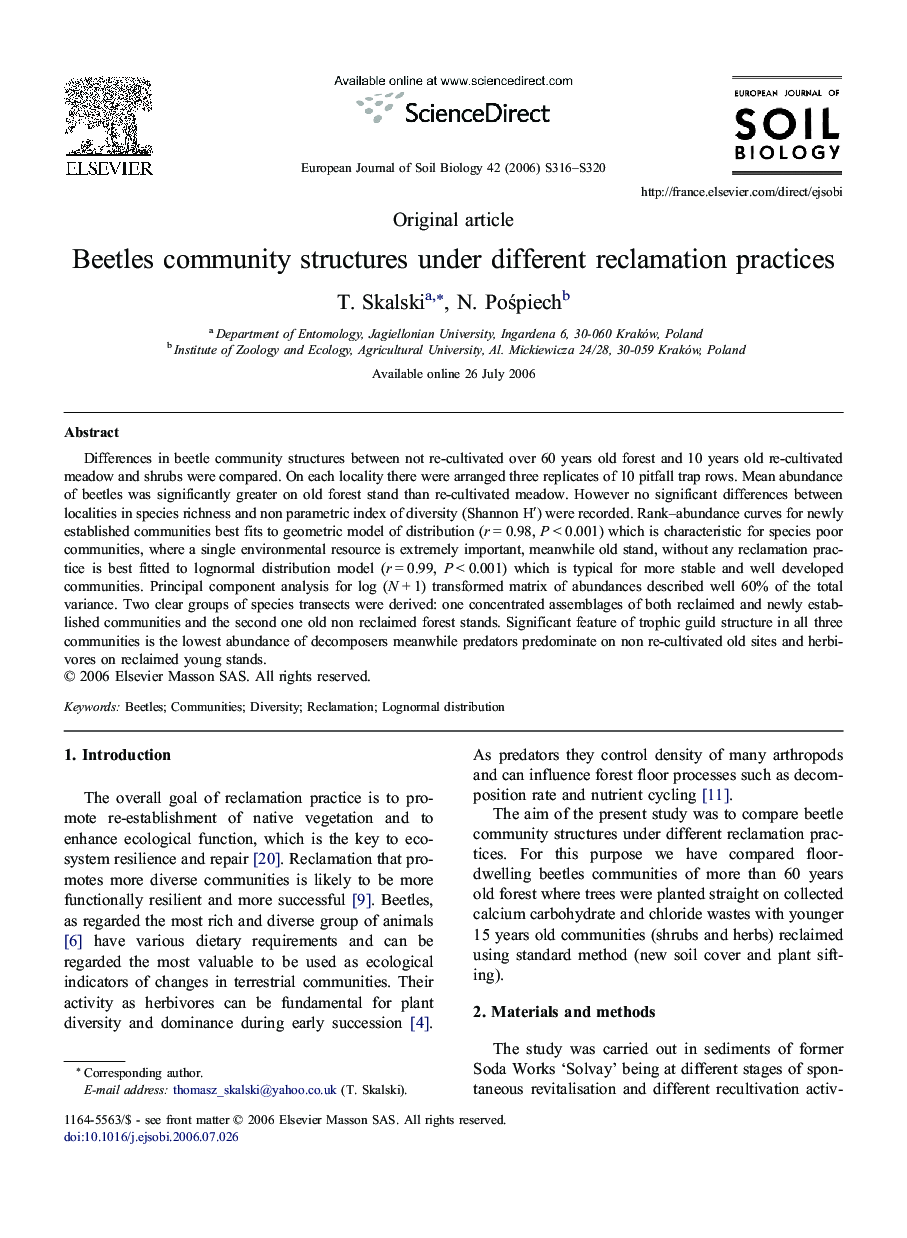| Article ID | Journal | Published Year | Pages | File Type |
|---|---|---|---|---|
| 4392632 | European Journal of Soil Biology | 2006 | 5 Pages |
Abstract
Differences in beetle community structures between not re-cultivated over 60 years old forest and 10 years old re-cultivated meadow and shrubs were compared. On each locality there were arranged three replicates of 10 pitfall trap rows. Mean abundance of beetles was significantly greater on old forest stand than re-cultivated meadow. However no significant differences between localities in species richness and non parametric index of diversity (Shannon Hâ²) were recorded. Rank-abundance curves for newly established communities best fits to geometric model of distribution (r = 0.98, P < 0.001) which is characteristic for species poor communities, where a single environmental resource is extremely important, meanwhile old stand, without any reclamation practice is best fitted to lognormal distribution model (r = 0.99, P < 0.001) which is typical for more stable and well developed communities. Principal component analysis for log (N + 1) transformed matrix of abundances described well 60% of the total variance. Two clear groups of species transects were derived: one concentrated assemblages of both reclaimed and newly established communities and the second one old non reclaimed forest stands. Significant feature of trophic guild structure in all three communities is the lowest abundance of decomposers meanwhile predators predominate on non re-cultivated old sites and herbivores on reclaimed young stands.
Related Topics
Life Sciences
Agricultural and Biological Sciences
Soil Science
Authors
T. Skalski, N. PoÅpiech,
